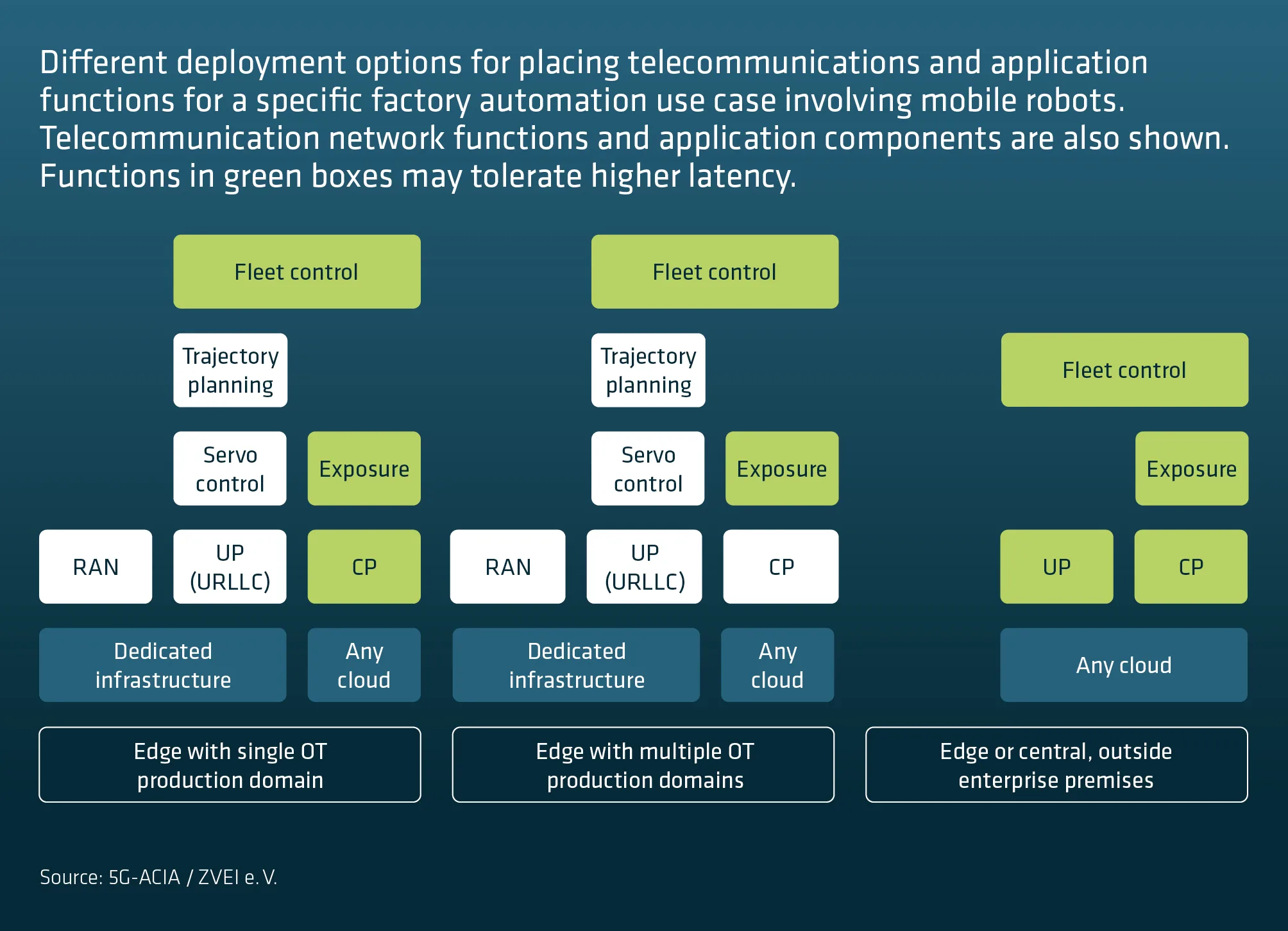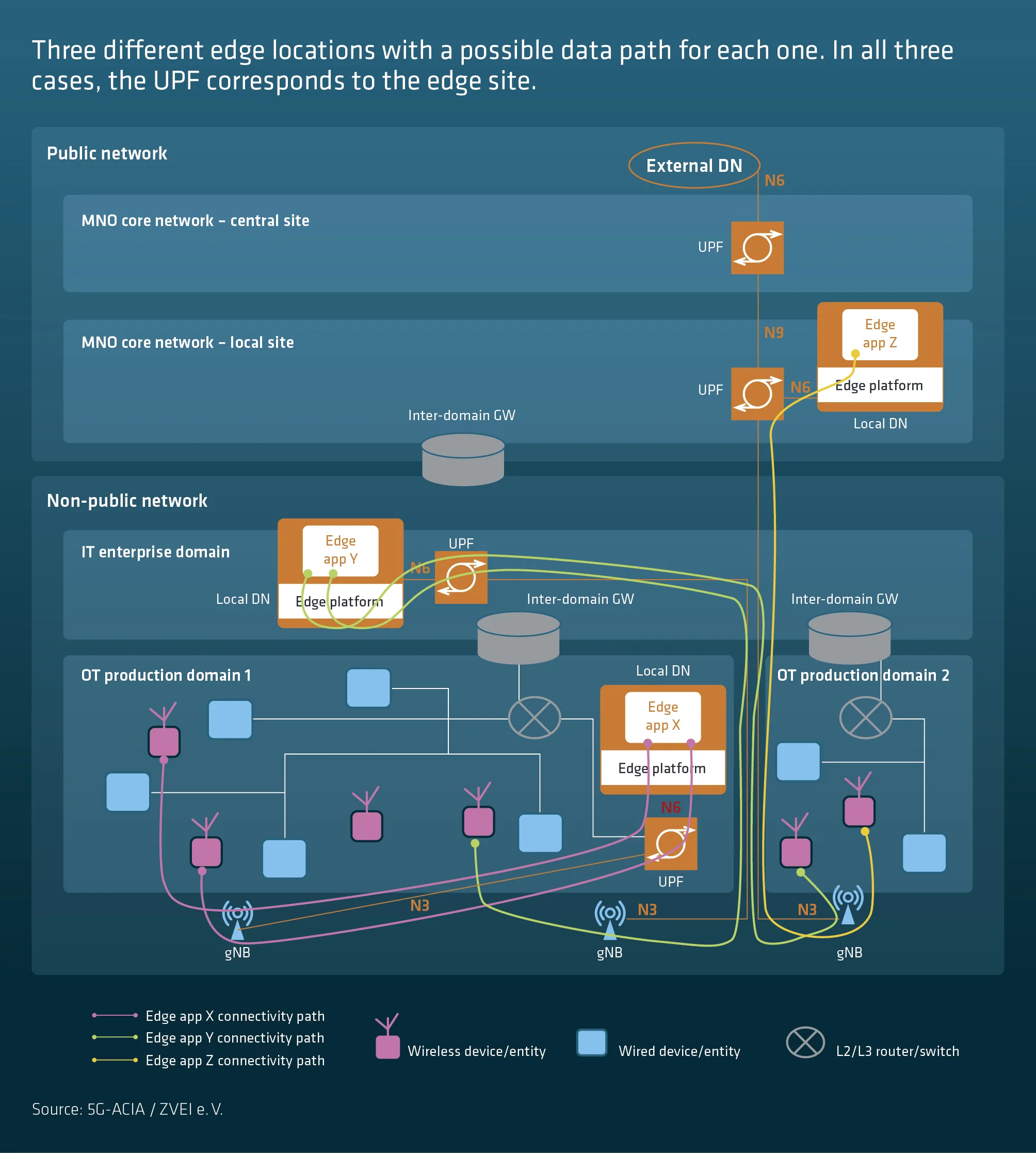This white paper addresses manufacturing use cases that may require or benefit from edge computing, while proposing nonpublic deployment options
for a number of cases and making recommendations on how appropriate network
architectures could be built.
We examine how the edge computing features of 5G networks can improve industrialuse cases,concluding that they deliver many other benefits besides latency. Use cases can also profit from locality and therefore greater data privacy as well as the abilityto scalably run compute-intensive applications such as media processing while consuming less network bandwidth. Solutions are also endowed with enhanced data aggregation capabilities as well as greater resiliency and reliability.
We present examples of use cases that we have examined and show that all of them could be deployed using standard 5G network functions and configuration capabilities. We also discuss the details of various options for configuring the components of an edge computing solution (such as edge
runtime infrastructure, network functions, and application functions) to illustrate how the flexibility provided by the standards makes it possible to meet the requirements of use cases in different setups.
Edge delivers many other benefits besides latency such as
In order to maximize the benefits edge computing, the architecture and deployment can be customized for the given scenario.
3GPP addresses the general requirements of networking and communciation to implement and to deploy all currently anticipated use cases.
Local runtime computing, networking and exposure of such capabilities are required for many use cases.


We have reviewed a number of industrial automation use cases and assessed whether they can benefit from or even require edge computing capabilities. These capabilities, and therefore also the benefits, of the use cases include latency and locality as well as the capabilities of scalable computing resources, which can improve data aggregation and save bandwidth with local processing. After identifying the relevant use cases, their principal communication and computation requirements, and the benefits of using the edge, we have proposed alternative locations for edge implementation and deployment options. 3GPP addresses the general requirements for implementing and deploying use cases in terms of networking and communi[1]cation. We have investigated several deployment options in greater detail, especially for the data plane (the User Plane Function (UPF) of the 3GPP 5G Core network) and analyzed the drawbacks and benefits of each option. Interaction between runtime application instances and the network is required for some use cases. They affect the deployment options for 3GPP exposure interfaces, often require local exposure of network capabilities. The standard feature set and flexible deployability of 5G enable a wide variety of edge computing configurations for implementing all currently anticipated use cases.

Do you want to learn more about this future-oriented topic? Please download or share the 5G-ACIA white paper as a PDF file.
You are currently viewing a placeholder content from YouTube. To access the actual content, click the button below. Please note that doing so will share data with third-party providers.
More InformationYou need to load content from reCAPTCHA to submit the form. Please note that doing so will share data with third-party providers.
More Information